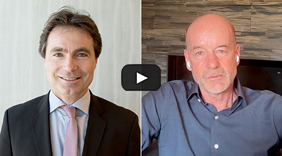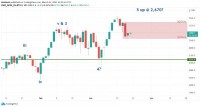|
Insider Talk What's Behind the Returns? Sol Waksman is a veteran observer of commodity trading advisors. He started the Barclay Hedge CTA database in 1985—after he sold his import business in the mid-1970s, lost money in supposedly safe bonds and learnt about futures markets. Here he talks about the reason for the stellar 2008 performance and what investors can expect from CTA strategies. Mr. Waksman grew up in Brooklyn, New York, but left several decades ago and says he enjoys Iowa small-town life. Opalesque Futures Intelligence: Some investors used to say that they do not want to be in managed futures because of the big drawdowns. What was a bad year for managed futures? Sol Waksman: I've heard people say that. There is a lot of variation across managers and they can lose heavily if conditions are adverse. Even then, the loss in a diversified managed futures portfolio is small. 1999 was a bad year; our broad-based CTA index went down less than 1.2%. Like with any investment, you need to diversify the portfolio. OFI: What's the main factor that accounts for profits and losses? SW: The most predominant managed futures strategy is some form of trend following. There has to be a sustainable trend for the methodology to identify. Much of the time markets don't trend, they chop back and forth. In that kind of environment trend-following methodologies make a little, lose a little, but on balance tend to be flat. OFI: Last year managed futures indexes show robust gains even as almost every asset class had heavy losses (p. 2). What accounts for the 2008 performance? SW: What set 2008 apart from other years is that there were pronounced trends in all the major sectors. In the first half of the year there were rallies in agricultural commodities, industrial metals and energy. Interest rates went up while the dollar weakened. Then everything reversed in the middle of the year and there was another set of sustained trends across many sectors. Large trends in many markets made 2008 an outstanding year for CTAs. OFI: How does 2007 compare to 2008? SW: 2007 was not a bad year—CTAs made 7.64%. There were some trends, but not as many as in 2008. By the way, the return is positive most years. OFI: How do CTA returns relate to equity returns?SW: Managed futures have a neutral correlation to the stock market, which means you cannot predict the return in one area if you know the return in the other. So it is possible for managed futures to be down when the stock market is down, but typically managed futures do well when the broader market is under stress. That's because under those conditions trends slowly build up and then accelerate. All the systematic traders get on board. OFI:From investors' point of view, what's an important difference between managed futures and hedge funds? SW: We've never seen gates come up when investors want to redeem from a managed futures fund. These are liquid markets and there are never any issues regarding portfolio valuation. Portfolios are marked to market every day. OFI: What would you advise an investor who's considering managed futures? SW: Take a long-term view, diversify your portfolio, and be very honest with yourself regarding your risk tolerance. Managed futures is a basket of directional bets—that's why you see higher monthly volatility than in other investment areas. So you have to be clear in your mind before you invest as to how much downside volatility you're willing to accept. If people are too optimistic, the danger is they will get out at the worst time. |
|
This article was published in Opalesque Futures Intelligence.
|





 RSS
RSS












